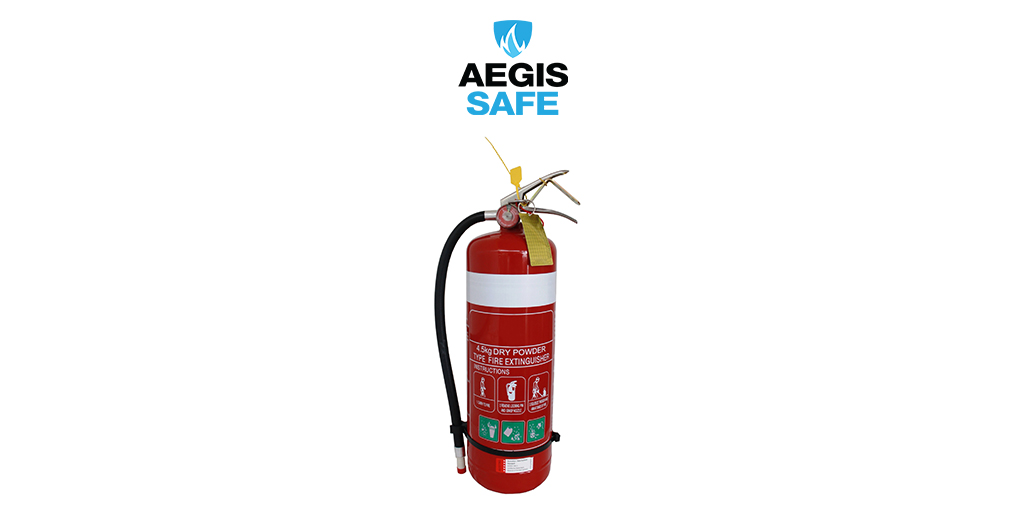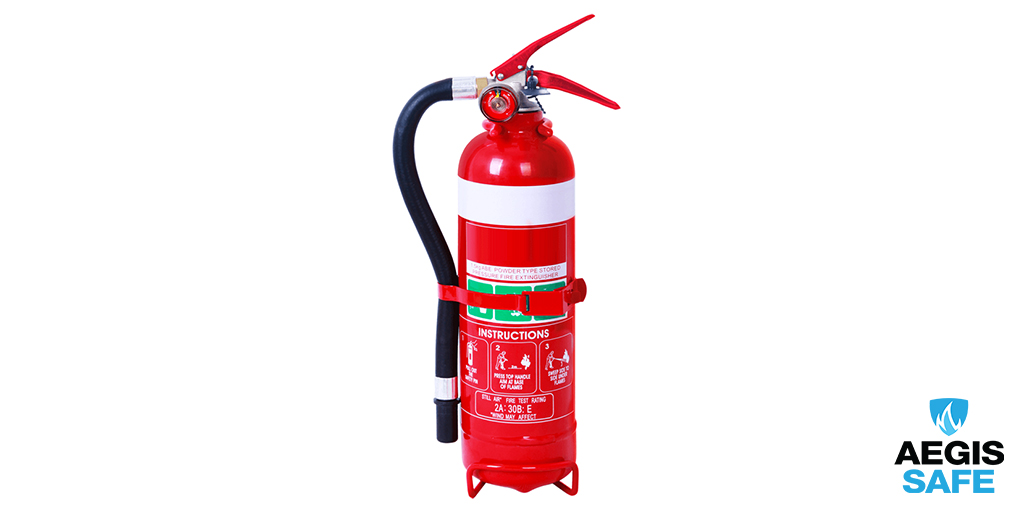Cart
Dry Chemical Fire Extinguishers
Introduction To Dry Chemical Fire Extinguishers
Dry chemical fire extinguishers are the most common on type of fire extinguisher used in Australia. The dry chemical fire extinguisher is also known as ABE, BE or DCP fire extinguishers. You need to look out for a white band running across the tank to determine whether it’s a dry chemical type extinguisher. You should also be able to check out the signs at the extinguisher installation location.
The following information is crucial for people who are seeking more knowledge about fire extinguishers, how they work and how they can used safely.
Types Of Dry Chemical Fire Extinguishers
Dry chemical fire extinguishers come in two main types:
1. ABE Type Fire Extinguishers
- Class A Fires – wood, fabrics, cardboard, paper
- Class B Fires – flammable liquid fires, oil, diesel, petrol
- Class E Fires – electrical fires, switchboards, photocopiers, computers
2. BE Type Fire Extinguishers
- Class B Fires – flammable liquid fires, petrol, oil, diesel
- Class E Fires – electrical fires, switchboards, photocopiers, computers,
- Class F Fires – BE type is also capable of extinguishing cooking oil fires, although this information is not included in the BE rating
Both types of dry chemical fire extinguishers can be utilised against flammable gas fires. However, you must carefully evaluate the situation before using the fire extinguisher in this scenario. When you extinguisher the fire the gas may continues to leak. The gas leak can eventually build up to become a potential explosion if the ignition is triggered.
Identifying Dry Chemical Fire Extinguishers
Dry chemical fire extinguishers are easily distinguishable by the white band that is around the fire extinguisher cylinder near the top. If installed in a building they should also be identified by what is known as a ID sign, which describes what fires the fire extinguisher can be used to extinguish.

How Does A Dry Chemical Extinguisher Work?
Dry chemical fire extinguishers attempt to eliminate one of the elements required by a fire to flourish. Most dry chemical extinguishers are equipped with mono ammonium phosphate, which melts and flows easily so that it moves over the fire, subsequently covering the flames. However the BE powder type is ineffective against class A fires as it does not melt.
What Types Of Fire Does A Dry Chemical Extinguisher Work For?
It’s crucial to use the correct extinguisher when one is attempting to put out a fire . The dry chemical fire extinguishers are effective against fires caused by liquid, paper, textiles, oil, and electrical equipment. This is the best type of fire extinguisher to deal with a variety of fires efficiently and safely. Dry chemical fire extinguishers come in two main types:
- ABE Type mainly handles classes A, B, and E. Its rating enables it to be effective against a variety of fires including, office equipment, computers, diesel, petrol, flammable liquids, human beings, wood, cardboard and paper.
- BE Type mainly handles fire classes B, E, and F and is effective against cooking oil fires, office equipment, electrical equipment, diesel, petrol, and flammable liquids.
It is crucial to have an extremely careful approach while using a dry chemical extinguisher against flammable gas fires, since gas fires are prone to explosions. If you harbour any doubt on your ability to operate a fire extinguisher properly you shouldn’t attempt to use it.
What Are The Benefits Of Using Dry Chemical Fire Extinguishers?
- They are a safer option than some variants and can be utilized against electrical fires
- They are not as expensive than variants of extinguishers
- They are compact and take up less space when compared with other variants
- They are versatile and can be utilized against various types of fires
- They are powerful and act quickly to extinguish fires
Advantages And Disadvantages
Advantages
- Non-conductor of electricity – Dry chemical powder can be used in situations where suspected or known ‘live’ electrical equipment is present.
- Quick knockdown – Dry chemical powder, when applied correctly and at a relevant application rate, attains the ability to ensure a quick knockout of the fire.
- No thermal shock – Dry chemical powder, when applied against hot metal doesn’t cause thermal shock. So, it is particularly useful to deal with fires involving metal assemblies.
- Good on fuel fires – when used in conjunction with foam sprays, is an extremely effective agent against running fuel fires.
- Good heat shield – when discharged, can create an effective shield against radiated heat. Situations where large quantities of dry chemical powder is discharged have the potential power to shield surrounding personnel and structures from being damaged by the effects of fire.
- Wide range of use – Dry chemical extinguishers can be utilised against class A, B and E fires.
- The most effective medium of fire-fighting, when compared mass for mass.
- Wide temperature range – Typically can be used in climates and temperatures ranging between -20 degrees Celsius to +60 degrees Celsius.
Disadvantages
- May cause breathing problems – if inhaled can irritate the respiratory organs. However, even though short-term exposure is not considered harmful, it is strictly recommended to avoid repeated inhalation.
- Visibility problems – A dense cloud is generated when dry powder is applied, dramatically reducing the operator’s visibility. With vision impaired, the operator will not be able to visually judge the powder’s effectiveness. This can seriously jeopardise the chances of escaping such a situation.
- Poor post-fire security – The chemical interference and smothering effect of the dry powder ensures that it only remains effective when it is present in the atmosphere, albeit above the fuel. As it’s a cloud of fine powder, its inherent particles can easily get dispersed by the wind. This can subsequently create an extremely dangerous situation of the fuel rapidly re-igniting.
- Leaves a residue – Dry powder generally leaves behind a corrosive and abrasive residue, as it is quite messy when compared with other extinguishing agents. If not used carefully, it can cause more damage than the fire. Also, usage of dry chemical powder fire extinguishers in offices or kitchens can contaminate food. When discharged, it also holds the ability to inhibit the use of electrical equipment like keyboards. The properties of the powder enables it to be easily carried through the atmosphere. Dry powder, being very light, can run the risk of contamination when discharged over a wide area.
- Can break down foam blanket – If dry powder is used in close proximity to an area covered by a foam blanket, that may cause the foam to break down more quickly.
- Limited usage. Must not be used on class D & F fires.
- Vulnerable to packing down – In cartridge operated extinguishers, there is high chance of the powder packing down within the extinguisher body if the extinguisher fails to perform correctly. This problem is particularly visible in vehicle mounted equipment, as the vibration from the vehicle causes the powder to become compressed under its own weight. In such instances, regular maintenance is absolutely essential to prevent any operational failure at a crucial time.
- Location & usage – Due to these disadvantages listed above, dry powder extinguishers should only be used in settings and where other alternative fire extinguishers are not suitable.

Which Types Of Fires Can A Dry Chemical Powder Fire Extinguisher Be Used On?
Dry chemical fire extinguishers are an extremely versatile and effective type of fire extinguisher. They can be used to extinguisher multiple fire types and are powerful compared to the other available fire extinguisher types.
FAQs
What Is The Colour Of Dry Chemical Fire Extinguishers?
These tanks are red and generally feature a white band running around their body near the top.
How Do You Use This Extinguisher?
To remember how to use the extinguisher remember the word PASS:
- Pull
- Aim
- Squeeze the lever
- Sweep side to side.
Is The Dry Chemical Fire Extinguisher Safe To Use?
It’s crucial that the user has some sort of protection for their breathing passages during usage in enclosed spaces. Inhaling the chemical powder might lead to some breathing difficulties.
Do These Extinguishers Need To Be Maintained?
Fire extinguishers must be inspected at by a qualified person every 6 months.
Conclusion
These dry chemical fire extinguishers are the ideal choice for offices, homes, and a variety of businesses. It’s important that the residents of a building have complete knowledge about the location, identification and operation of dry chemical fire extinguishers. This will enable them to know which extinguisher to be used during a fire. If a building is equipped with these extinguishers, it will help protect lives and also prevent the loss of property, in case of an emergency. People having a complete understanding of the operation of the fire extinguishers will be more successful in their attempt to put out the fire.
Make sure your fire systems are safe and compliant today!
Our fire services are designed to protect you and save you time, money and effort.
Contact us today for a free quote.
Fire Safety Articles
About Aegis Safe
Your safety and peace of mind is our objective. Aegis Safe has been helping our clients protect their staff and property with our full range of comprehensive fire protection solutions since 2009. We specialise in installing, inspecting, testing, diagnosing and repairing fire protection systems.


Great Blog! Quite Informative…